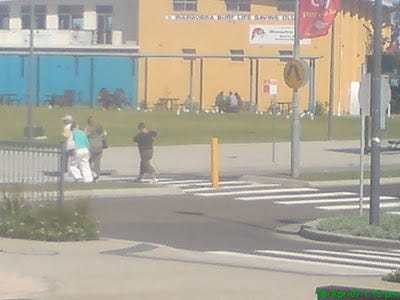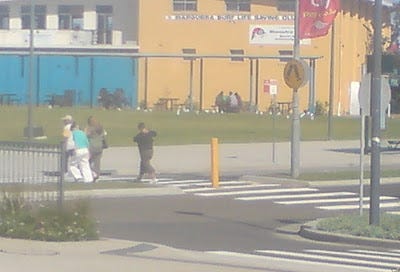
There was much to struggle with, and much to be uncertain about, as the world examined the words of the young man who went out and shot 32 people in the US's worst massacre.
Does anyone really think any politician in this country could care less what was happening in 50 or a 100 years time? They care about their own survival, they care about feathering their own nest, they care about furthering their own ideological positions; and if climate change can help to serve all those purposes, to make them appear busy, important, capable of tackling the big issues, of appearing to work in a spirit of self-sacrifice, it was a very convenient vehicle to hang your hat on.
And for goodness sake, in reality, as the economy harbouring China and India's 1,700 million plus people what possible real difference could a remote and sparsely populated country like Australia really make?
It was hardly the first time that the vicious self-interest that has come to rule Sydney has been paraded as a social justice issue.
The arrival of climate change as the new state religion came at just the right time for those seeking belief. The previous state sponsored religion of multi-culturalism was falling apart under the weight of its own contradictions and hypocricies. The government of the day was moving to change the core tenets of the over-arching belief system, away from m-m-m-multiplicity to unity.
There were radical Islamic groups in Western Sydney preaching, in tax payer funded public halls, against the evils of capitalism, communism, homesexuality, of Christianity, Budhism, Hinduism and the Jews; and yes, against the evils of multi-culturalism itself; along the lines of "if you believe in everything, you believe in nothing". While white men on radio exercise the freedoms of democracy faced being charged with hate crimes, no such threats faced the brewing neo-fascist movements in the suburban heartlands.
Few commentators, and even fewer journalists, struggled to point out the complexity of the debate over climate change, global warming, and man's role in the ever changing face of the planet. The media, like so many other aspects of Australian life, has fallen for the cult of the new. There are very few old journalists, and even frewer happy old journalists. A profession with an astonishingly high staff turnover, you don't have to stay long to become regarded as methuselah. There is no historical memory in almost any of the nation's newsrooms. Most of the reporters are young, in their 20s or early 30s, and are happy to report everything on the face of it. When
Every newsroom in the country
What will be next?
Just when you thought it couldn't get worse, when it was impossible to becme more cloakingly, cloyingly converted, the Sydney Morning Herald published a green newspaper, literally, aimed at promoting the WWF's Earth Hour, where we could all feel good about saving the planet by turning our lights off for an hour.
This followed on from their previous attempt at saturation conversion, when they produced a pink Herald for breast cancer, as if men didn't get cancer and didn't read the newspaper.
But in the history of Austrlaian journalism, the publication of a green edition by the SMH, once regularly listed as one of the top 20 broadsheets in the world, was a milestone in the abandonment of perspective. Whle campaigning journalism is all very well and good, running
Perhaps David Salter described it best, when he called it "a burst of vacuous symbolism designed to flatter the moral vanities of the SMH readership while turning a fast buck behind their backs."



